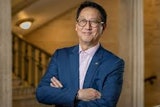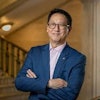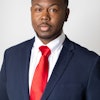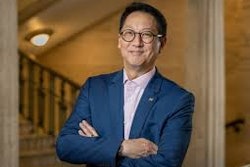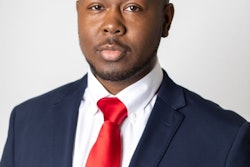For Dr. Freeman Hrabowski III, nothing beats the view from the top of the world that he helped shape during the past 20 years. Even on a day when storm clouds hover, the president of the University of Maryland, Baltimore County, or UMBC, humbly acknowledges that his academic kingdom looks mighty good.
Visitors flock to the 12,888-student campus, which is also fourth among U.S. research universities in the production of IT degrees and certificates, according to recent data from the Department of Education. It also is the largest producer among those universities of IT graduates in Maryland, the District of Columbia, and Virginia.
UMBC sits along a corridor that leads to the region’s international airport and the nation’s capital. Hrabowski reveals that many who visit are from institutions such as Cornell, the University of Michigan and Louisiana State University, as well as HBCUs including Florida A&M University and Morehouse College.
Since 1988, when he co-founded the famed Meyerhoff Program at UMBC with Baltimore philanthropist Robert Meyerhoff, the university has been successfully doing what some parents, corporations and even President Barack Obama want all in American higher education to be able to do—reinvigorate students’ interest in the sciences and in math while training the next generation of engineers, researchers and scientists.
Though it was at first focused on increasing the number of African-American males attending college and earning degrees in the sciences, today, using federal, foundation and university funding, the Meyerhoff program has broadened its reach to include all high-achieving students regardless of race while still focusing on its commitment to recruiting and retaining underrepresented students, says LaMont Toliver, the program’s director.
According to Hrabowski, UMBC is one of the few predominantly White institutions in the nation that can say that the graduation rates of African-Americans are always as high as any other group and sometimes even higher.
The expertise and zeal Hrabowski brings to STEM and the success of minority students at UMBC are fueled, in part, by his academic background. Hrabowski is a mathematician who graduated with honors at 19 from Hampton Institute (now Hampton University). He earned a Ph.D. in higher education administration and statistics from the University of Illinois at Urbana-Champaign when he was 24.
At UMBC, 45 percent of the students earn degrees in STEM and 50 percent of them are African-American, Hrabowski says. UMBC also leads the country in the number of predominantly White universities sending Black students on who complete Ph.Ds. in science.
For the past two years, UMBC has landed in the coveted No. 1 spot on U.S. News & World Report’s ranking of top up-and coming schools in the nation. Many say Hrabowski has been largely responsible for putting the East Coast university on the map.
“Dr. Hrabowski’s leadership at UMBC and commitment to underrepresented groups in science and engineering have had a powerful impact on both the Maryland system and on higher education as a whole,” says Stephanie Bell-Rose, head of TIAACREF, which in March awarded Hrabowski the Theodore M. Hesburgh Award. This is the organization’s highest honor and prize for leadership in higher education.
On the ‘Rooftop’
Before they leave UMBC or soon after they arrive, Hrabowski almost always asks his guests, “Would you like to go up to the rooftop?”
For Hrabowski, the man who “lives, breathes and bleeds UMBC,” the tour he leads is a part of doing business as the CEO. And, he adds, the roof of the university’s administration building is just “a great place” to sell the institution he’s led as president for two decades.
Hrabowski first points to UMBC’s public policy building, which offers the largest doctoral program in the state. “We show them the library, the two engineering and IT buildings—the university produces more than 30 percent of Maryland’s IT graduates and about 20 percent of them are African-American.” Hrabowski then pivots and points east to a bustling construction site from which a new $170 million arts and humanities building is emerging.
When construction wraps up, UMBC will have completed the nearly $700 million building plan it began in the mid-1990s. Hrabowski contends that, while the nation’s attention and much of the university’s efforts have been focused on STEM education, UMBC is challenged also to balance and showcase other disciplines—arts, humanities and the social sciences. Dotting the 500-acre campus are more than 80 companies—most are IT, biotech and cyber security—infused by funding from the Kauffman Foundation to spur entrepreneurship among students and faculty regardless of their area of study.
“A dancer may know his craft,” Hrabowski adds, but these are places, he says, where students can learn “the business side, about revenues and expenditures, and marketing a dance school.”
At least 20 percent of the companies here have CEOs of color, and a number of them are African-American. “These are young people who are leading in IT, biotech, and cyber security,” Hrabowski says. He also notes: “They’re hiring hundreds of our students part-time and full-time.”
And the important thing, Hrabowski adds, “They’re all making payroll.”
Setting the Tone
Hrabowski’s vision for UMBC’s campus expansion and plans for education innovation were unleashed two decades ago in his inaugural address. This is when he called for the walls that long separated the university from the community to come tumbling down.
“I said knock down the walls around the university, get faculty and students and others opportunities to work in companies and national agencies, and bring children to campus,” he recalls. “We supervise hundreds of young boys—all first-time offenders—on our campus 24 hours a day, seven days a week through our Choice Program. We’ve been doing this for 20 years.”
This effort to reach out into the community, Hrabowski says, is UMBC’s attempt “to respond authentically” to the root causes of what plagues many of Baltimore’s underachieving Black children and their families.
Before coming to UMBC, Hrabowski spent seven years in administration at historically Black Coppin State University in Baltimore City. Today, he’s fond of describing predominantly White and racially diverse UMBC as “historically diverse.”
When UMBC was founded in 1966, the same year that Hrabowski was entering Hampton Institute as a freshman, its doors were just opening to all students regardless of race. Today, half of UMBC’s students are White, 20 percent are Black or Hispanic, and 20 percent are Asian. Among the university’s African-American student population, half are male, a statistic that is unprecedented at most institutions, perhaps with the exception of Morehouse College, an all-male HBCU in Atlanta.
Mistaking UMBC for a historically Black university is something that happens often, says Toliver when he responds to inquiries about his Meyerhoff Scholars Program. For many, the culture that they expect to find at an HBCU, they recognize at UMBC, Toliver adds. “It may be because Freeman is a Black president or because of the excellence that they find among high-achieving African-American students in the classroom or the nurturing environment created for students.”
“All those things are relevant at UMBC, and I count it as a compliment to be compared to an HBCU,” says Toliver. Hrabowski credits campus diversity for helping UMBC bring in funding, attract national visibility and broaden the talent pool of students and faculty.
Jeremy Brickey, a senior honors English major, is glad to see UMBC’s image as “just a commuter school” fade and be replaced by images of welcoming campus spaces where students want to linger and a rigorous academic environment.
Securing UMBC’s position of leadership among peer institutions also has meant seeding the ground with students such as Robert Wardlow, a senior biochemistry major and Meyerhoff scholar. He recently earned a perfect score on the Medical College Admission Test, or MCAT. Wardlow, who is African-American, turned down admission to Harvard and several other Ivy League institutions to pursue science education at UMBC, a place that he says is nurturing and able to “open doors” just like the Ivies. Hrabowski, however, is quick to point out that Wardlow’s achievement, while exceptional, is not unique among the community of high-achieving young scholars he and his faculty are training.
However, when it comes to educating students most in need of remedial and academic support, UMBC may not be the school of choice, Hrabowski says without apology.
“We can’t be all things to everybody,” says Hrabowski, who is instead focusing on training and dispatching K-12 teachers who can enter troubled public schools and help underrepresented students succeed academically. At UMBC, “we made a decision about the types of students we would educate. Some say we are being elitist. I would tell them, ‘I wanted to produce Black scientists. I needed to find students who could benefit from what we had to offer.’”
“I talk about the Talented Tenth without apology. Sometimes in the African-American community, we’re embarrassed to talk about the Talented Tenth,” says Hrabowski. The Talented Tenth often is used to describe Blacks who are poised to make it academically and socially because they are educated and able to excel.
But they need support, too, argues Hrabowski. If they didn’t, there would be more than just 2 percent of African-Americans earning Ph.Ds. in STEM fields, he adds.
With research showing that only 20 percent of underrepresented minority freshmen who major in science and engineering disciplines graduate in those disciplines and that the numbers are similarly dismal for White and Asian-American students (33 percent and 42 percent, respectively), UMBC has changed how it teaches its introductory STEM courses. Faculty members say that the new approach, which came after a decade of study at the university, is aimed at increasing student success and collaboration, learning, and ultimately graduation rates. This year, Hrabowski headed a National Academies committee that recommended strategies for increasing the number of minority scientists and engineers.
UMBC’s shift to group-focused learning models is also something borrowed from what has worked with Meyerhoff scholars who are encouraged to form study groups, says Toliver. At UMBC, the mandate to ensure overall student success comes both from the top down and from inside and outside the university, says Dr. Renetta Tull, assistant dean for graduate student development. And those efforts, she says, often bring a diverse cast to the table, “from people in facilities management, to faculty, to career services and even alumni,” to find solutions and make sure that UMBC students graduate and get jobs.
The View from the Mountaintop
During rare snatches of time when Hrabowski can escape alone to the rooftop of the administration building, he stares out past the construction, the hubs of enterprise and beyond the downtown Baltimore skyline on a clear day. This is what he sees: “A place that changes lives. A place where students from all types of backgrounds come. A place that allows people to come in and strive to be their best.”
“When I’m up here I see the possibilities—changing lives, producing leaders, changing the region, helping poor children learn to read, getting people excited about science. Transformation is what I see,” says Hrabowski.
Growing up in segregated Birmingham, Ala., in the 1950s and 1960s, the chubby young boy who excelled academically got “goose bumps” at the thought of tackling challenging math problems, devoured books, and became a child-leader in the civil rights movement at age 12.
“The important part of leadership is about remembering whom you are as a human being and knowing one’s self,” explains Hrabowski.
He also credits that life lesson to the words he remembers Dr. Martin Luther King Jr. speaking while in Birmingham about the importance of one’s works in impacting future generations and to his early involvement in the movement. He took to the racially divisive streets of Birmingham to march in King’s Children’s Crusade and eventually landed in jail for a week with the civil rights leader and other youngsters and adults in the movement.
In 2009, Time magazine named Hrabowski as one of America’s 10 Best College Presidents. The year before that, U.S. News and World Report tapped him as one of America’s Best Leaders.
Cynthia Hill, associate provost for student support services, calls Hrabowski “the driver behind the UMBC philosophy of inclusive cooperation and hard work.” But while Hill and others know that the day will come when the heavily courted president will no longer serve at UMBC’s helm, she is comforted by what she sees taking shape on campus to prepare for that day.
During her nearly 40-year tenure at UMBC, Hill says she has watched as Hrabowski goes about building broad coalitions and focusing on “cadres of people at various levels” in the university who will be poised to perpetuate the philosophy and cultural climate he has put in place.
UMBC professor and AIDS researcher Dr. Michael Summers says that he was one of the early converts to the culture of STEM diversity Hrabowski created. During the academic year and in the summers, at least 15 undergraduate STEM researchers, along with several postdoctoral students and Ph.D. candidates, commandeer Summers’ biochemistry laboratory where breakthroughs in unraveling the protein structure of the HIV virus are being made. Most are Black and other students of color.
“I’m a White male who grew up in the South. When I got into science I wasn’t thinking about diversity,” says Summers, who easily reaches back to credit middle school science teacher Joseph Cummings, his first and only Black teacher at the time, for first igniting his lifelong interest in science. Today, Summers, a Howard Hughes Medical Institute investigator, takes to the road with Hrabowski to help spread the news at other universities about what works to recruit and retain minority students in STEM.
At UMBC, recruiting and retaining the best and the brightest students have helped land the institution in a solid spot, but devising methods to bring along those students who “may not be as prepared to succeed in higher education, whether they come here or not,” is what Hrabowski and his administration are working to do. Starting with transforming how many traditional first-year courses are taught and finding ways to prepare larger numbers of teachers to take on those challenges have been a major focus at the campus. And so have efforts to improve the graduation rates for men of color who transfer to UMBC.
But this is a new semester. When most presidents welcome their freshmen with a motivational speech, they often ask students to look at the person seated to the right and to the left of them. Instead of the usual warning that one of them will not make it to graduation, Hrabowski announces that the university’s goal is to ensure that they all remain and earn their degrees.
Like an affirmation, Hrabowski also reminds UMBC students that “we accepted you because we know that you have the skills, the ability and the habits to succeed.” D
